Table of Content
| SL No. | Topic Name |
| 01 | Uses & Advantages |
| 02 | Disadvantages |
| 03 | Important Achievements |
| 04 | Expeditions |
Uses & Advantages
Best safe and secure cloud storage with password protection
Get Envato Elements, Prime Video, Hotstar and Netflix For Free
Best Money Earning Website 100$ Day
#1 Top ranking article submission website
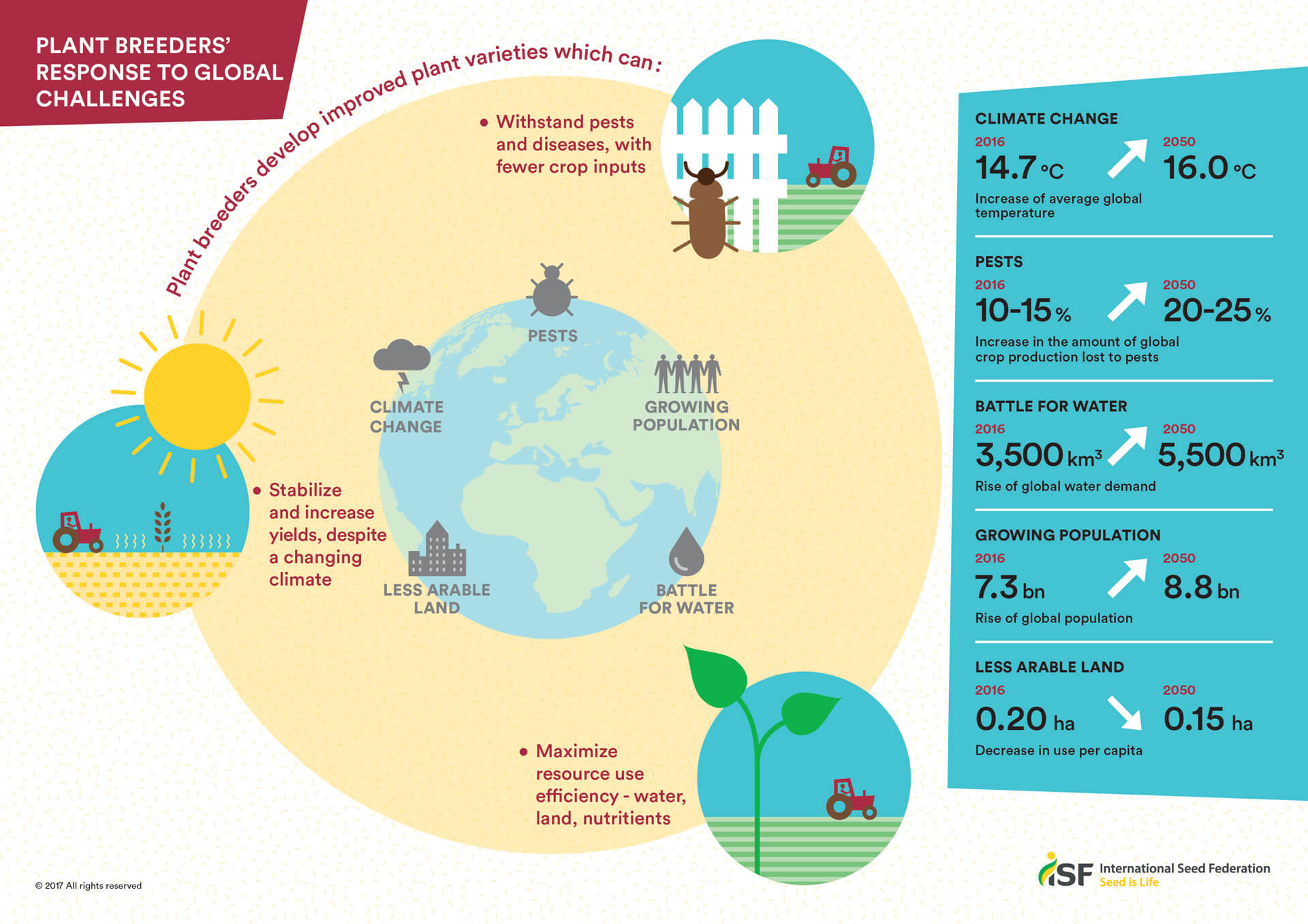
- Plant introduction and acclimatization is used when the entirely new crops, already of no occurrence in the country, are to be grown and given widespread cultivation. It provides entirely new crop plants. Benefits from such new plants to agriculture and industry are well known.
- It provides superior varieties either directly, after selection or through hybridization.
- Introduction and exploration are the only feasible meaning of collecting germplasm and to protect variability from genetic erosion.
- It is very quick and economical method of crop improvement, particularly when the introductions are released as varieties either directly or after selection.
- Crop species may be introduced in new disease-free areas to protect them from damage, e.g., coffee and rubber.
- When the particular characters are not available in the local material, the varieties possessing them are imported from outside and their blood is injected into the local varieties to ginger up the production.
Above all, greatest advantage of plant introduction and acclimatization is this that it is the easiest method of crop improvement in plant breeding.
Disadvantages
The disadvantages of plant introduction are associated with the entry into the country of weeds, diseases and pests along with introduced materials. In the past, several such cases have occurred, some of which are briefly described below:
Diseases
- Late blight of potato (Phytophthora infestans)- A serious disease of potato introduced into India in 1883 from Europe , and is now well spread in all the potato growing parts in India.

Late Blight of Potatoes
Flag smut of Wheat ( Uracystis tritici) – It was introduced from Australia.
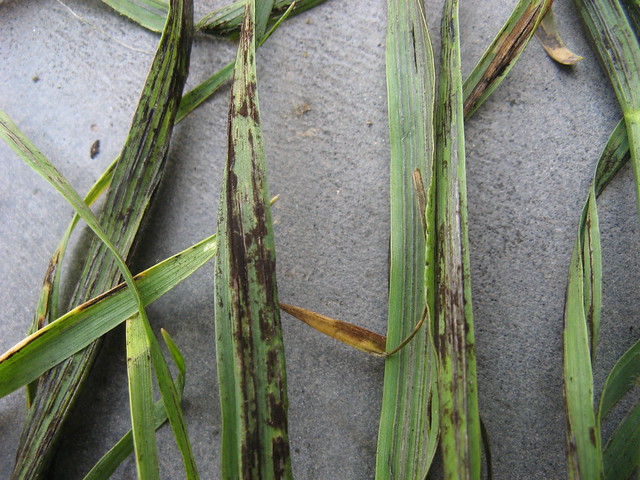
- Leaf disese of coffee ( Hemileia vastatrix Berk and Br.)- Coffee rust came from Ceylon in 1876 and is now well spread wherever coffee is grown in the country.
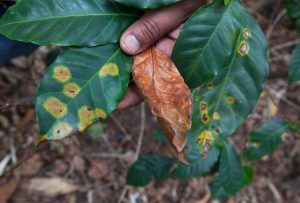
- Fire blight of apple and pear – The disease was introduced from England 1940 .
- Bunchy Top of banana– It was introduced from Ceylon in 1940, has since spread widely in kerala, Mysore, Orissa and west Bengal.
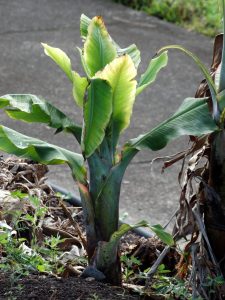
Figure: Banana Bunchy top disease
Insect Pests
- Potato tuber Moth ( Gnorimoschema oppercilella) – It entered from Italy in 1900 and is now widely distributed pest of stored and field potatoes all over the country.
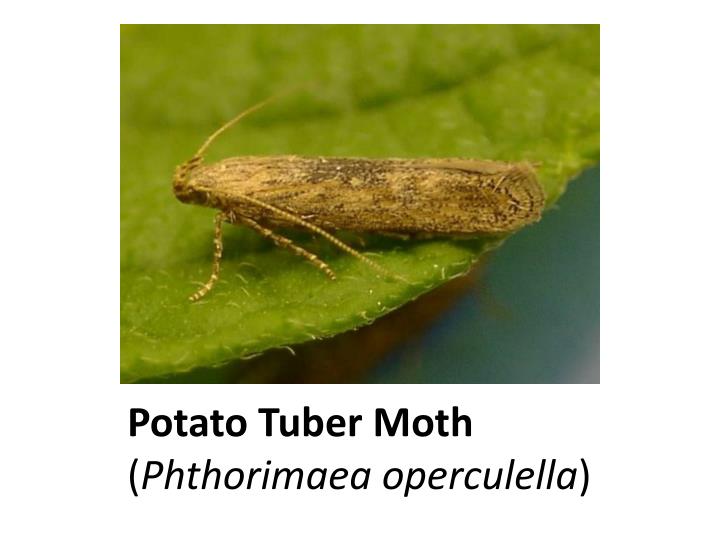
- Wolly aphis ( Eriosoma lanigerum)- It is the introduced and serious pest of the apple causing substantial losses to the crops.
- Fluted scale ( Icerya purchase Mask)- This pest entered the country through Ceylon from Australia probably on wattles before 1928 and become a serious peet of citrus.
Weeds
Argemone Mexicana, Eichornia crassipes, Lantana camara L. and Phylaris minor(gehunsa) are among some of the harmful undesirable weeds which also entered our country along with the foreign material and now are widespread over entire country causing a great loss to crops.
Ornamental-Turned-Weeds
Some introduced ornamental species may become noxious weeds in the new habitat, water hyacinth and Lantana camara (kuri) were both introduced in the country as ornamental plants, but they are now noxious weeds.
Threat To Ecological Balance
Some introduced species may disturb the ecological balance in their new home, and may cause serious damage to the ecosystem. Eucalyptus spp., introduced from Australia, cause a rapid depletion of the subsoil water reserves. Many scientists fear that large scale planting of Eucalyptus spp. In Bangladesh may deplete the subsoil and underground water reserves, which is bound to be detrimental to the ecosystem.
Important Achievements
The extensive movements of plants from their centers of origin occurred primarily due to introductions in the prehistoric times. Almost all the countries all over the world have obtained entirely new crops through introduction. Introduced material have been used directly as varieties after selection or used in hybridization programmes. The examples of varieties developed from primary and secondary introductions are too numerous to be listed in toto. Some important examples will be cited to illustrate the achievements of plant introduction.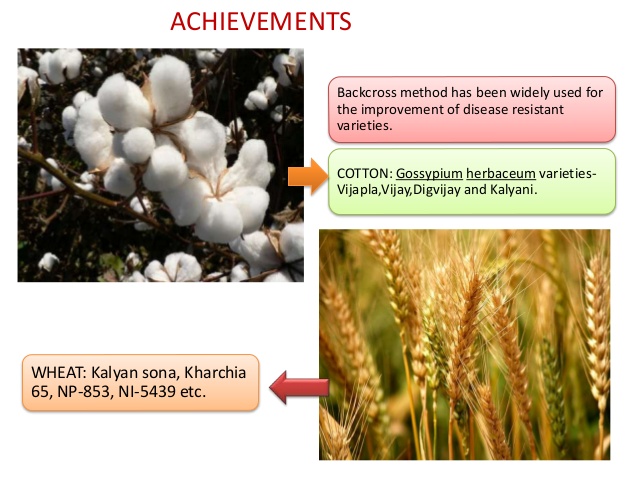
New Plants
- Crops- Several agricultural and industrial crops such as maize, potato, sweet potato, groundnut, chillies, coffee, para-rubber, cinchona, berseem, French and Lima Bean, Pumpkin, American cotton, willows etc. are the examples introductions at the time of acclimatization and at present also affect the economy considerably.

https://www.sun.ac.za/english/faculty/agri/plant-pathology/PublishingImages/Home/Banner.jpg - Fruits- The common fruits like guava, grape fruites, custard apple, pineapple, papaya, pumpkin, cashew nut, cacao, litchi, tomato and several others were imported in the past and are contributing a lot to the wealth of fruite industry in the country.
- Ornamentals: Many of the ornamentals such as Cassia, Gulmohor, Bougainvellea, Colvillea, Quisqualis, Salvia, Aster, Phlox, pink, Snapdragon etc are foreign introductions which today enhance the beauty of gardens all over the world.
Direct Release as Varieties
Semidwarf wheat varieties Sonora 64 and Lerma Rojo were released directly for cultivation. TN1 rice was introduced from Taiwan and directly as a variety. Other introduced rice varieties are IR8, IR21 and IR36 from IRRI, Philippines. Other examples include Ridley wheat and kent oat (A. sativa), both from Australia; Bonneville and Early Badger peas; Delcrest and Virginia Glod Tobacco (N. tabacum); Brag, Lee, Clark 63and Hill Davis Soyabeans and Sioux tomato all from USA. Several introductions of vegetables cowpea, cauliflower, onion, lettuce, watermelon, etc. have been released as varieties.
Varieties selected from introduction
Many varieties have been developed through selection from introduction. Two varieties of wheat, Kalyan Sona and Sonalika, were selected from introduction from CIMMYT, Mexico. These varieties dominated wheat cultivation for about one decade.
Varieties Developed Through Hybridization
Introduction have contributed immensely to the development of crop varieties through hybridization. All the present day semi-dwarf wheat varieties are derived from crosses with Mexican semi-dwarf wheats. All but few semi-dwarf rice varieties possesses the dwarfing gene. Thus almost all the semi-dwarf wheat and rice varieties have been developed from crosses involving introductions. The hybrid maize, jowar, and bajra varieties generally have one parent, the male sterile (or the female) parent, which is either an introduction or derived from an introduction. All the sugarcane varieties have been derived from the introduced noble canes ( Saccharum officinarum).
Expedition
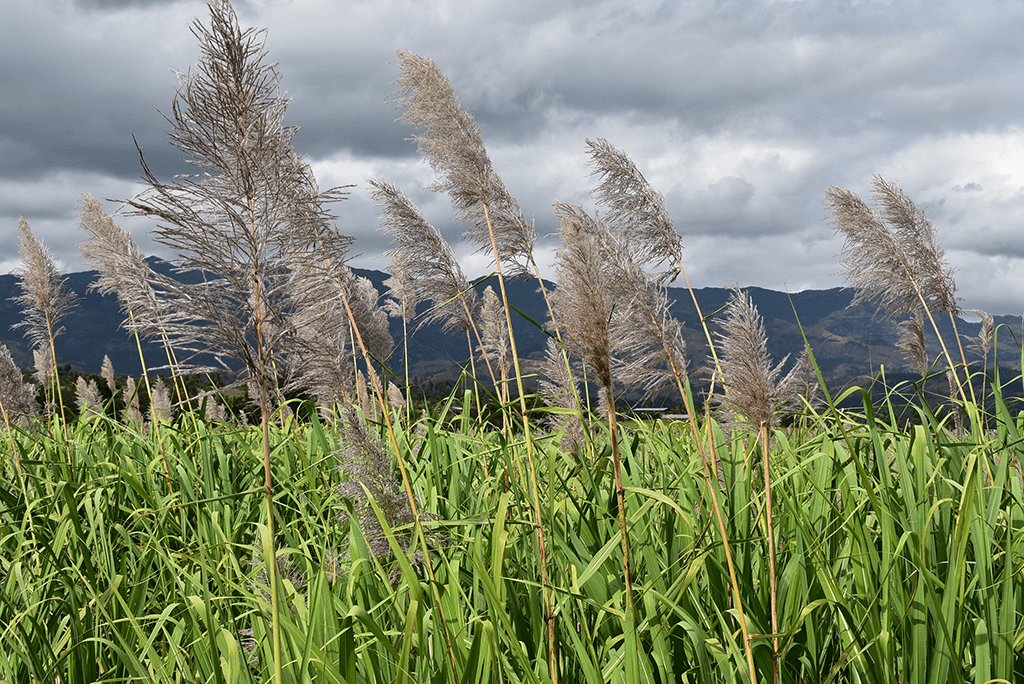
In the year of 1955, the botanical survey of India sent a team to Bomdila, NEFA and later during March-May, 1961, an I.A.R.I. team explored the area between Butwal and Pokhra, and Pokhra and Muktinah in central Nepal. Similar expeditions like six botanists to Russia and specialist of Central Rice Research Institute, Cuttak, to different regions within the country are the notable efforts towards plant introduction. These parties collected valuable living plants and herbarium specimens which are of great significant in crop improvement.
References & Other Links
- H.k Chowdhury (Elementary plant breeding)
- Singh Bd (Plant Breeding principles and methods)
- https://plantlet.org/plant-introduction-and-acclimatization-easiest-method-of-crop-improvement/?preview_id=7619&preview_nonce=ee3f632ae9&_thumbnail_id=8150&preview=true
- https://plantlet.org/plant-introduction-and-acclimatization-history-organizations-and-procedure/?preview_id=7931&preview_nonce=76f85032d1&_thumbnail_id=7954&preview=true
Written by
Tasfia Tabassum, B.S. (Hons), Department of Botany, University of Dhaka
Revised by
- 1. Khaleda Akter Shompa on 6 August, 2020
 Plantlet The Blogging Platform of Department of Botany, University of Dhaka
Plantlet The Blogging Platform of Department of Botany, University of Dhaka





I don’t think the title of your article matches the content lol. Just kidding, mainly because I had some doubts after reading the article.